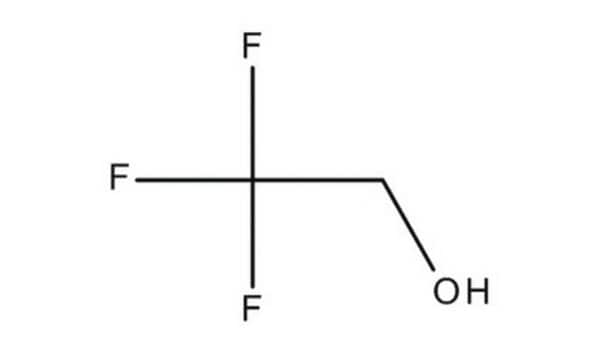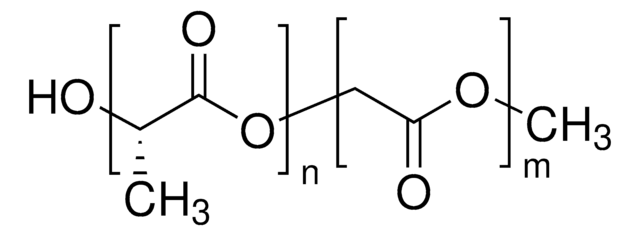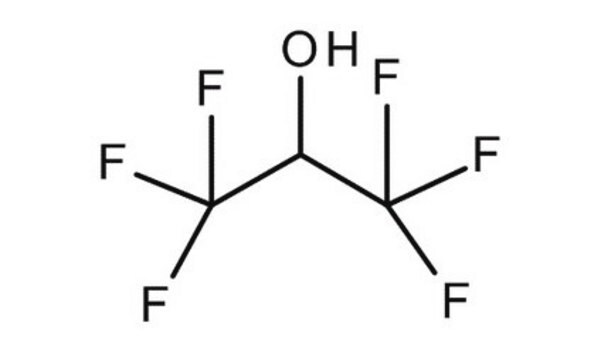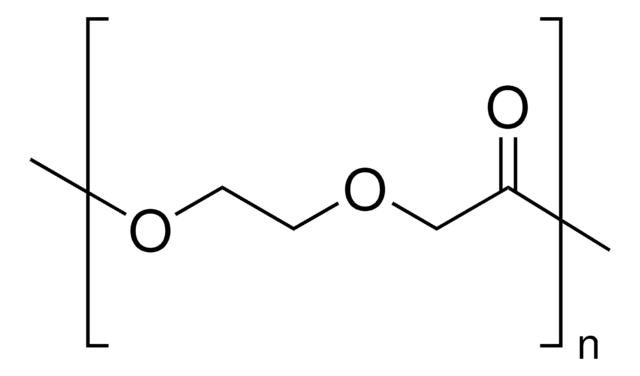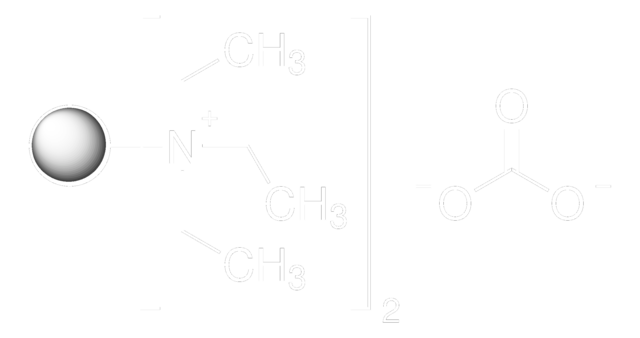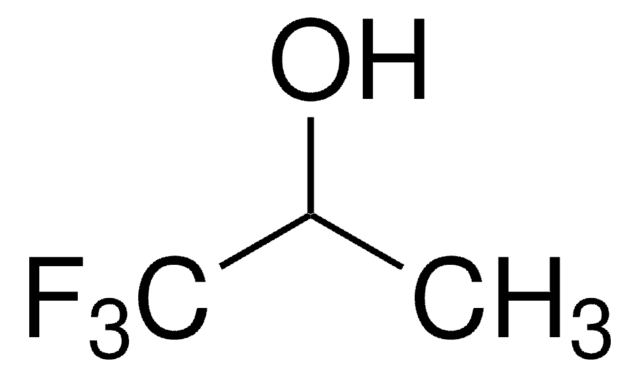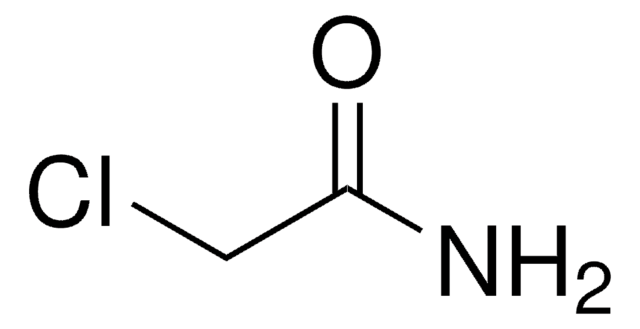Wichtige Dokumente
96924
2,2,2-Trifluorethanol
BioUltra, for molecular biology, ≥99.0% (GC)
Synonym(e):
Trifluorethylalkohol
About This Item
Empfohlene Produkte
Qualität
Molecular Biology
for molecular biology
Dampfdichte
3.5 (vs air)
Dampfdruck
70 mmHg ( 25 °C)
Produktlinie
BioUltra
Assay
≥99.0% (GC)
Form
liquid
Selbstzündungstemp.
~896 °F
Expl.-Gr.
42 %
Methode(n)
GC/GC: suitable
Verunreinigungen
DNases, none detected
RNases, none detected
insoluble matter, passes filter test
phosphatases, none detected
proteases, none detected
Brechungsindex
n20/D 1.3 (lit.)
bp
77-80 °C (lit.)
mp (Schmelzpunkt)
−44 °C (lit.)
Dichte
1.373 g/mL at 25 °C (lit.)
Kationenspuren
Al: ≤0.5 mg/kg
Ba: ≤0.1 mg/kg
Bi: ≤0.1 mg/kg
Ca: ≤0.5 mg/kg
Cd: ≤0.05 mg/kg
Co: ≤0.02 mg/kg
Cr: ≤0.02 mg/kg
Cu: ≤0.02 mg/kg
Fe: ≤0.1 mg/kg
K: ≤0.5 mg/kg
Li: ≤0.1 mg/kg
Mg: ≤0.1 mg/kg
Mn: ≤0.02 mg/kg
Mo: ≤0.1 mg/kg
Na: ≤1 mg/kg
Ni: ≤0.02 mg/kg
Pb: ≤0.1 mg/kg
Sr: ≤0.1 mg/kg
Zn: ≤0.1 mg/kg
λ
neat
SMILES String
OCC(F)(F)F
UV-Absorption
λ: 260 nm Amax: ≤0.03
λ: 280 nm Amax: ≤0.02
Anwendung(en)
sample preparation
InChI
1S/C2H3F3O/c3-2(4,5)1-6/h6H,1H2
InChIKey
RHQDFWAXVIIEBN-UHFFFAOYSA-N
Suchen Sie nach ähnlichen Produkten? Aufrufen Leitfaden zum Produktvergleich
Anwendung
Sonstige Hinweise
Signalwort
Danger
Gefahreneinstufungen
Acute Tox. 3 Inhalation - Acute Tox. 3 Oral - Eye Dam. 1 - Flam. Liq. 3 - Repr. 1B - STOT RE 2 Inhalation
Zielorgane
Blood
Lagerklassenschlüssel
3 - Flammable liquids
WGK
WGK 1
Flammpunkt (°F)
86.0 °F - closed cup
Flammpunkt (°C)
30 °C - closed cup
Persönliche Schutzausrüstung
Eyeshields, Faceshields, Gloves, type ABEK (EN14387) respirator filter
Hier finden Sie alle aktuellen Versionen:
Besitzen Sie dieses Produkt bereits?
In der Dokumentenbibliothek finden Sie die Dokumentation zu den Produkten, die Sie kürzlich erworben haben.
Kunden haben sich ebenfalls angesehen
Unser Team von Wissenschaftlern verfügt über Erfahrung in allen Forschungsbereichen einschließlich Life Science, Materialwissenschaften, chemischer Synthese, Chromatographie, Analytik und vielen mehr..
Setzen Sie sich mit dem technischen Dienst in Verbindung.